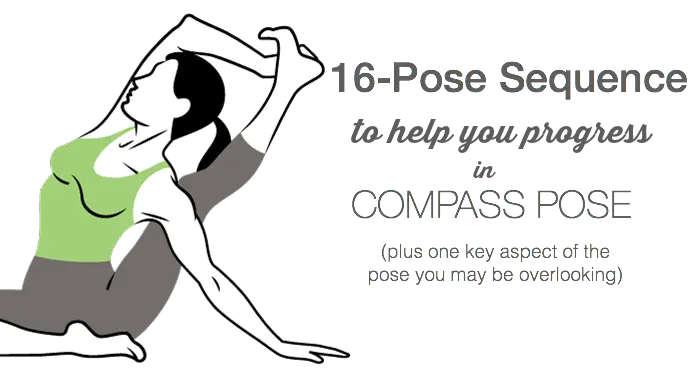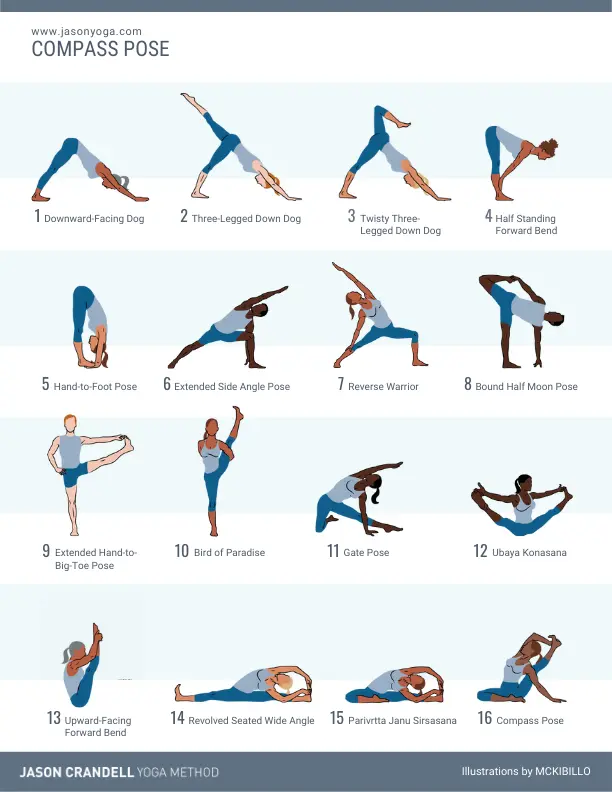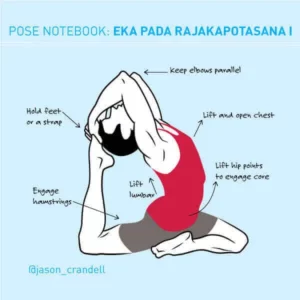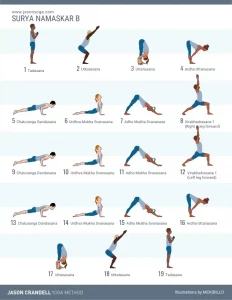
I hear more sweet sighs of relief when I teach yoga sequences that focus on side-bends than any other posture category. Side-bending in poses like Compass Pose releases tension in the lats, obliques, and QLs, leaving students in a momentary state of suspension where everything feels better than it did a moment ago.
Compass Pose is a deep side bend that differs from its close relatives, Parivrtta Janu Sirsasana and Parivrtta Upavistha Konasana (poses 14 & 15): The upright, regal nature of the pose requires you to engage your core and spinal muscles. Instead of using gravity and laying your torso down into the pose, you have to work a little harder to lift up and lengthen your spine.
To meet these increased demands, this 16-pose sequence will:
1) Open your hamstrings and adductors.
2) Bring your awareness to your core and spinal muscles.
3) Stretch your side-body, including your lats, obliques, and quadratus lumborum muscles.
Here’s a closer look at the logic of my Compass Pose yoga sequence.
Compass Pose Yoga Sequence
Poses 1-3
: These three versions of Down Dog will help you settle into your practice and begin opening your body for Compass pose. The one-legged variation of Down Dog will accentuate the stretch in your bottom leg, while the one-legged variation with the twist will provide your first side-bend of the sequence. Feel free to lean back—almost like you’re going to “flip your dog”—and indulge the stretch in your side-body. Stay for as many breaths in these 3 poses as you like.
Poses 4-5
: These postures focus on keeping your spine long and stretching your hamstrings. This will prepare your body for the deeper forward bends and side-bends which come later in the sequence. Hold each pose for 5-6 breaths.
Poses 6-10
: This sequence of standing poses progressively amplifies the demand in your hamstrings, adductors and side-body. These postures flow together nicely and become progressively more demanding. If Bird of Paradise is inaccessible, feel free to skip it or simply practice the pose and keep your top knee bent. Take 3-5 breaths in each pose.
Pose 11
: Now that your body is warm, it’s time to open your side-body more deeply and approximate the shape of Compass. Parighasana is the perfect pose for the job. Take at least 5 breaths here and allow your body to open up.
Poses 12-13
: These two postures do more than open your hamstrings and adductors. They prepare you for Compass by requiring you to use your core and spinal muscles to lengthen up through your spine. You’ll need to sit tall in Compass. These two postures set the tone for Compass’ upright nature perfectly. Take 3-5 breaths in each pose.
Poses 14-16
: I teach this progression of side-bends all the time. It feels like a classic combination of lengthening the spine, reaching through the side body and releasing deeply held tension in the inner-legs and lower back. The three postures become progressively more demanding. If you’re body is not ready for Compass, take a step back and content yourself to work with poses 14 and 15. Stay until your heart is content in each of these poses and breath into your tight spots.
{illustrations by MCKIBILLO}
Want more sequences by Jason?
Sign up to join our newsletter and we’ll send you our e-book:
30 Essential Home Practice Sequences.



